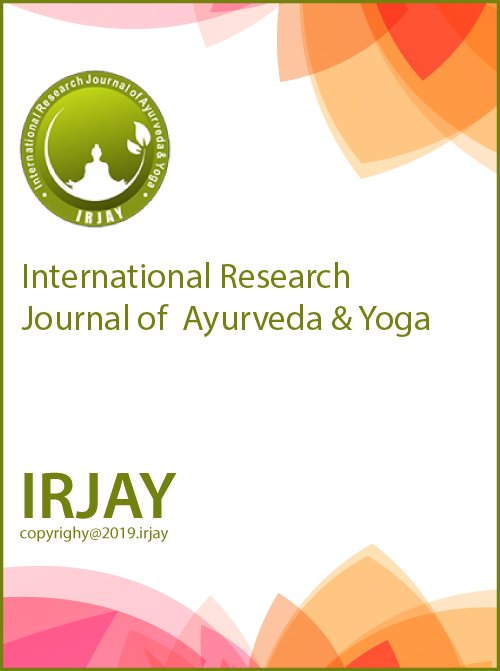High-Performance Thin Layer Chromatography (HPTLC) Profiling of Methanolic Extract of Sunthi Choorna (Powder of Dried Rhizome of Zingiber officinale Rosc.)
DOI:
https://doi.org/10.48165/IRJAY.2024.71202Keywords:
Zingiber officinale Rosc, Sunthi, high-performance thin layer chromatography, chromatographic fingerprintingAbstract
Introduction: High-Performance Thin-Layer Chromatography (HPTLC) is a versatile analytical technique widely employed for qualitative and quantitative analysis across various fields. Known for its high resolution, sensitivity, and reproducibility, HPTLC is particularly effective for separating and identifying complex mixtures. The visual fingerprints generated in chromatograms facilitate quality control, authenticity verification, and compound profiling. Sunthi, the dried rhizome of Zingiber officinale Rosc., is renowned for its therapeutic benefits. Ensuring its authenticity and quality is essential for safe and effective use. Chromatographic fingerprinting provides a reliable method to identify its pharmacologically active and chemically unique components, supporting its validation and standardization. Materials and Methods: An HPTLC plate measuring 5 × 10 cm, pre-coated with silica gel 60 F254 TLC plates, was used as the stationary phase. Toluene: chloroform: methanol (5:4:1) was used as the mobile phase. Visualization was done under ultraviolet light at 254 nm and 366 nm. Results and Discussion: The HPTLC of the methanolic extract of Sunthi choorna (powder of dried rhizome of Zingiber officinale Rosc.) showed 12 peaks in a total area of 78977.6 AU at 254 nm and 15 peaks with an area of 239963.4 AU at 366 nm. Conclusion: HPTLC fingerprinting plays a vital role in the standardization of herbal drugs, particularly in the identification of medicinal plants. The fingerprinting profile of Sunthi Choorna (powdered dried rhizome of Zingiber officinale Rosc.) reveals 12 peaks at 254 nm and 15 peaks at 366 nm. This method provides a detailed profile analysis that is essential for quality control and can be a valuable tool for future research.
Downloads
References
Attimarad M, Ahmed KK. High-performance thin layer chromatography: A powerful analytical technique in pharmaceutical drug discovery. Pharm Methods. 2011;29(5):71-75.
Sharma RK, Dash B. Charaka Samhita Sutra 25/38. 5th ed. Varanasi: Chaukambha Sanskrit Series Office; 2013. p. 422. 3. Murthy KR. Vridha Vagbhata. Ashtanga Sangraham 14/2. 9th ed. Varanasi: Chaukamba Orientalia; 2012. p. 293.
Bapalal GV. Nighantu Adarsa. 2nd ed. Varanasi: Chaukambha Bharati Academy; 2013. p. 568-579.
Chunekar KC, Pandey GS. Bhavamisra. Bhavaprakasha Nighantu. 6th ed. Varanasi: Chaukambha Bharati Academy; 2010. p. 166.
Tripathi ID. Raja Nighantu. 6th ed. Varanasi: Chaukambha Krishnadas Academy; 2009. p. 139.
Ministry of Health and Family Welfare. Ayurveda Pharmacopoeia of India. 1st ed. Government of India; Part 1. Vol 1:138-139.
Li X, et al. Zingiberis Rhizoma Recens: A review of its traditional uses, phytochemistry, pharmacology, and toxicology. Evidence Based Complement Alternat Med. 2021;66(6):89-90. doi: 10.1155/2021/6668990. PMID: 33747112; PMCID: PMC7943299.
Wallis TE. Textbook of pharmacognosy. Reprint ed. New Delhi: CBS Publishers and Distributors; 2009. p. 389-393. 10. Estelitta S. Package of practices recommendations for crops.
Directorate of Extension, Kerala Agricultural University, Thrissur. Reprint ed. 2017. p. 130-133.
Mian SS, et al. Physicochemical analysis of ginger (Zingiber officinale Rosc.) rhizome along with its TLC, HPLC, and HPTLC profile. Pharmaceutical Methods. 2019;10(1):79-83.

